Zebrafish prefer to swim in cohesive shoals, a tendency that develops within the first weeks of age. Swimming in close proximity to conspecifics, also called social preference, starts to develop as early as 1–2 weeks-post-fertilization (wpf).
Social interactions between conspecifics are an important factor in normal development of an individual in a community, and their deficits correlate with multiple psychiatric disorders. Several methods for assessing social behavior and its deficits have been described for zebrafish, and include tests for social preference and social interaction.
In this protocol, we outline two simple social preference assays for zebrafish. The first is for adult fish in the Zantiks LT system. The second is a higher throughput assay for zebrafish larvae in the MWP system.
Experimental setup (Adult)
Set up the LT tank for the social preference assay using the social assay inserts as shown in the video below. Fill the tank to a depth of 100-150mm (approximately half the tank) or less with tank/culture water. In one of the four corner chambers place the conspecific fish. This may be a single fish or multiple depending on your experimental needs. In the example outlined below four fish were placed in the top left corner chamber of the tank. Place the focal/test fish in the large central chamber of the tank. The tank and fish can then be loaded into the Zantiks LT system.
LT social assay tank setup
Experimental procedure (Adult)
Place the loaded tank into a Zantiks LT unit. Allow fish to acclimate for 5 minutes in the dark (unable to see conspecifics). Following the acclimation period, turn on the overhead lights so that the focal fish can now see the conspecific(s) in one of the four corner chambers. Record the movement of the focal fish for 20 minutes.
Adult zebrafish in the social preference setup in the LT during the lights on recording period. Video courtesy of Parker et al., University of Surrey
Results / Data output (Adult)
The chamber housing the focal fish is divided into 8 zones (see example assets below). Time spent in zone, entries into zone and distance travelled in zone are exported for all 8 zones within the arena. The data may then be used to calculate the social preference index.
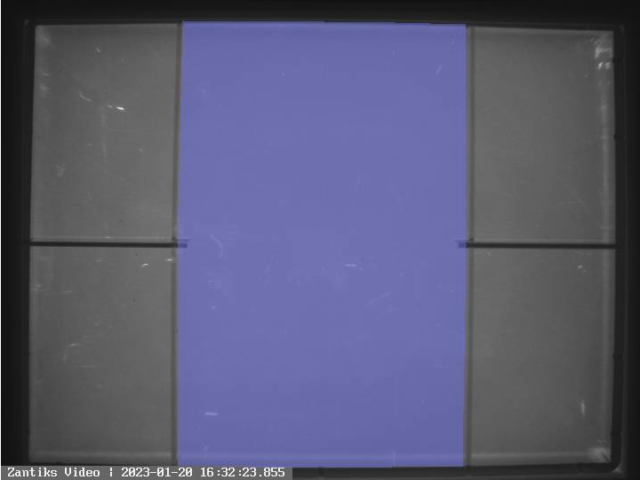
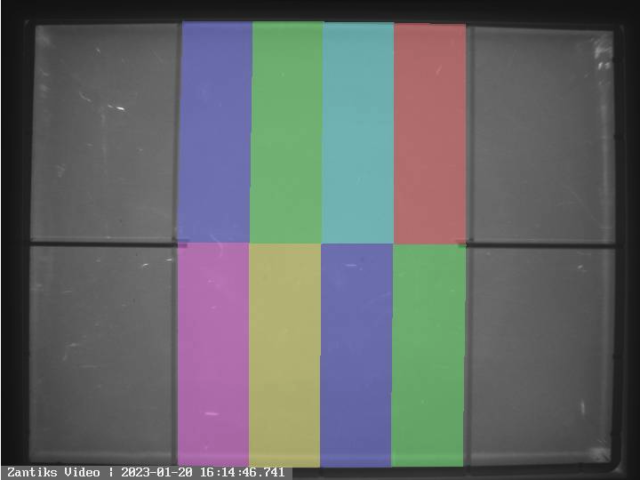
Experimental setup (Larvae)
Place a single larval/juvenile fish into each lane of the social behaviour, bioassay plate (containing culture tank water). Each lane has a small square chamber at each end. In one end place a conspecific fish. The chamber at the opposite end remains empty (containing just water) as a control. Once loaded, the social plate can be placed on the MWP light stimulation plate and placed into the system.
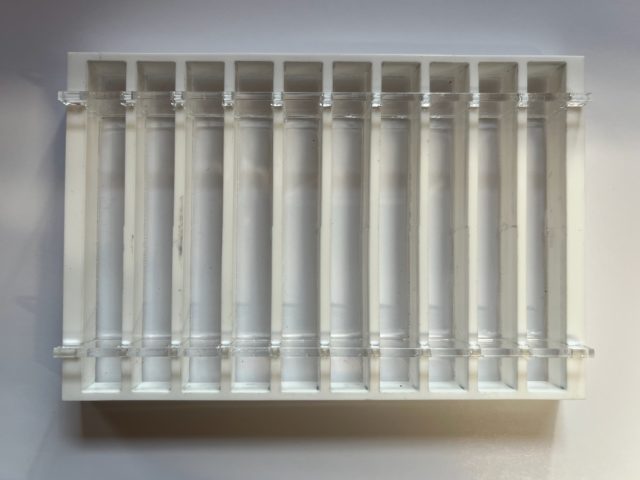
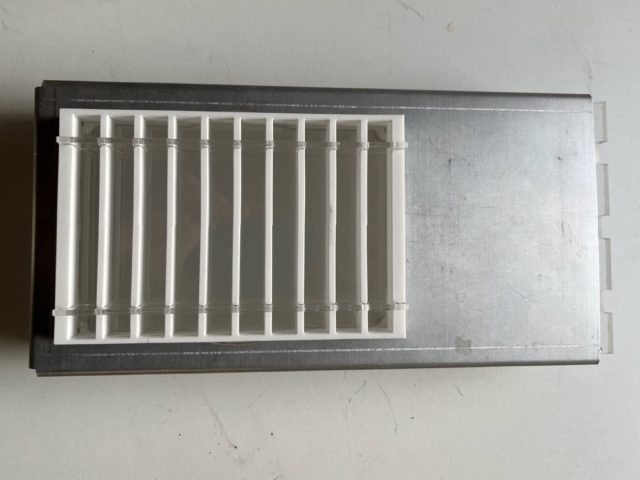
Experimental procedure (Larvae)
Place the loaded social behaviour plate into a Zantiks MWP unit. If working with zebrafish larvae it is advised to pre heat & maintain the system at a temperature of 28°C (or the temperature at which the animals are housed/cultured). Allow fish to acclimate for 5 minutes in the dark (unable to see conspecifics). Following the acclimation period, turn on the overhead lights so that the focal fish can now see the conspecific fish in one of the two square chambers. Record the movement of the focal fish for 20 minutes.
5dpf zebrafish larvae in the social bioassay plate during the lights off acclimation period. Video courtesy of Parker et al., University of Portsmouth
Results / Data output (Larvae)
The chamber housing the focal fish is divided into 5 zones. Time spent in zone, entries into zone and distance travelled in zone are exported for all 5 zones within the arena. The data may then be used to calculate the social preference index using the following formula:

where (TZ#) represents the time spent in zones 1–4.
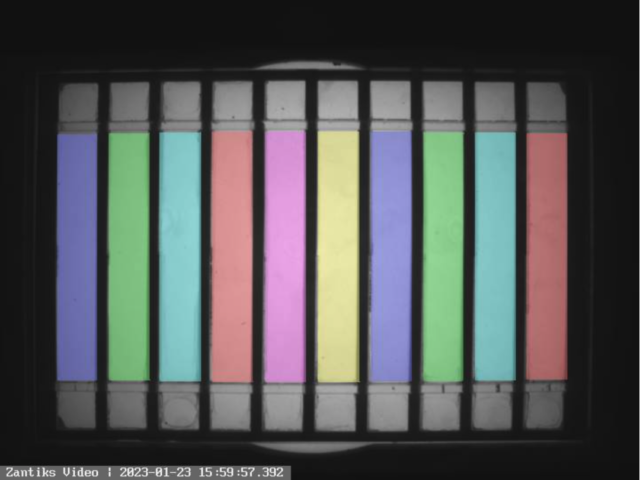
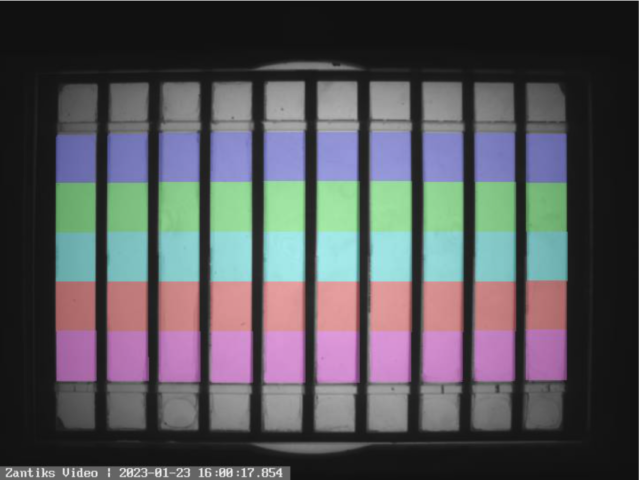
Protocol scripts downloads
There are two scripts for the social preference test for zebrafish. One script for use with adult fish in the LT system and one for larval fish in the MWP system.
There are two assets that you will use. The arena asset will indicate the entire swimming space for the focal fish. The zones asset will 'divide' the focal fish arena into the separate zones away from the conspecific fish.
Zebrafish adults in the LT
Zebrafish larvae in the MWP
Assets
You will need to upload the correct assets into the Asset directory on your Zantiks Control Console and ensure the correct asset name is in the LOAD(ZONES,"name_of_asset") and the LOAD(ARENAS,"name_of_asset") command in the script.
See the Calibrating your Zantiks unit page and Asset building in the LT unit or Asset building in the MWP page for details on how to create assets customised to your system.



